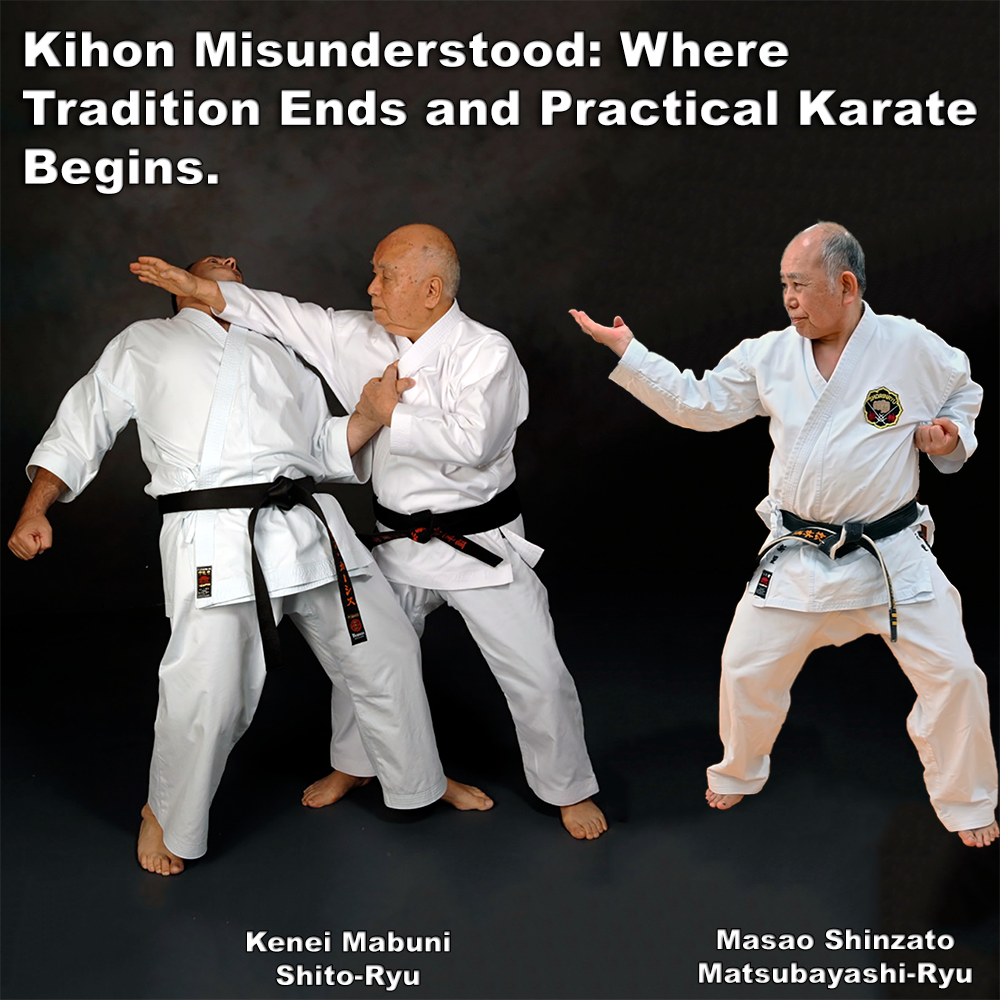
(Approx 2 minute 40 second read)
My word it is hard to get through to some people sometimes.
.
Karate basics are often misunderstood. What are called soto uke, gedan barai, uchi uke, jodan uke, and more – many see these as literal blocks, designed simply to stop an incoming attack.
.
But if you stop at that idea (see what I did there?), you miss everything that your karate and your kata are trying to teach.
.
Someone told me that in his version of kung-fu some students are told to practice movements big first, so they can “shrink” them later. It was presented as a smarter way of training than the “sledgehammer” style he was used to in kyokushin.
.
Let’s add a bit of science to this, because the body doesn’t care about tradition, it adapts to what you actually train.
.
The ‘specificity principle’ in motor learning states that your nervous system adapts to the exact movements you train. Large, exaggerated movements create adaptations for those large movements. They do not automatically translate to precise, efficient techniques under pressure.
.
Henneman’s size principle reinforces this: small and large movements recruit different motor units. Training only the “big” version doesn’t prepare you for the subtlety and speed required in realistic application.
.
The misunderstanding of kihon also affects how you see kata. But kata were never designed to highlight blocks. Many movements share trajectories or patterns and serve multiple purposes.
.
Many movements in kata appear exaggerated simply because tradition has formalized them that way. Over time, instructors and textbooks emphasized visible shape rather than function, and students learned to mimic the form instead of understanding the purpose.
.
What looks like a “big movement” is a reflection of misunderstanding that has been copied without question.
.
A friend of mine illustrated this with a language analogy: if a block were literally a block, it would be a two-syllable action, while a punch is one syllable. The attack comes first; the so-called block comes second. If you rely on the “second syllable” to stop the attack, you are always late.
.
The first movement must meet, redirect, or control the attack.
.
He also reminded me that many of the pioneers of karate put it plainly: “there are no passive arms in karate”. Every movement has practical purpose, often more than one.
.
The lesson is clear: karate is about function, not form for tradition’s sake. Misreading kihon leads to misreading your karate, distorting everything.
.
Training must reflect the intent and context of the movement, not a misapplied idea of “blocks” or exaggerated practice. Under pressure, only what you have actually trained will work. It really isn’t rocket science.
.
Practicing running won’t teach you to swim, just because both use arms and legs.
.
Understanding kihon correctly, its timing, purpose, and functional logic, is the foundation for everything else.
.
But as I mention so often, context is everything. If you are training for competition, for aesthetics, for fitness and fun, none of this matters. However, if you want your karate to be there when you need it, to actually protect you, you have to stop believing your kihon practice is “just basic”.
.
Yes it’s fundamental to your practice but not in its application. It is practical, if you look inside and ask why you are doing this, and how it relates to the way you are doing it.
.
Start thinking for yourself. Too many people try to make a non-practical version of karate fit a practical purpose, and that’s why the confusion never ends. Stop accepting that version. It won’t work.
.
And this is where tradition and reality finally part ways. The inherited shapes of kihon are not the reality you face when someone grabs you, swings at you, or tries to hurt you. The context determines the outcome.
.
When tradition is misunderstood, it becomes decoration. When context is understood, it becomes protection.
.
.
Written by Adam Carter – Shuri Dojo
.
.
Image of Kenei Mabuni and Masao Shinzato for representation purposes only.
